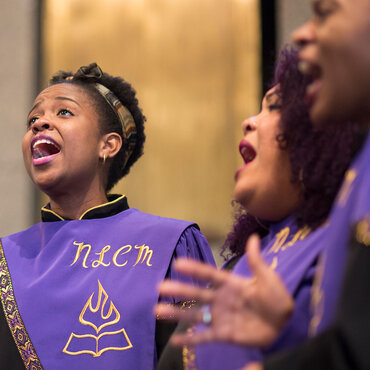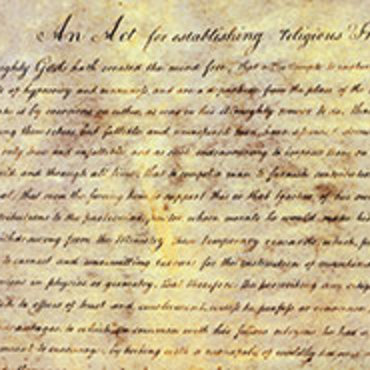
Islamic Traditions
This three-module course demonstrates how the Introduce-Investigate-Intersect-Introspect model can be utilized to explore religious identity formation within Islamic traditions.
Get even more great free content!
This content contains copyrighted material that requires a free NewseumED account.
Registration is fast, easy, and comes with 100% free access to our vast collection of videos, artifacts, interactive content, and more.
NewseumED is provided as a free educational resource and contains copyrighted material. Registration is required for full access. Signing up is simple and free.
With a free NewseumED account, you can:
- Watch timely and informative videos
- Access expertly crafted lesson plans
- Download an array of classroom resources
- and much more!
- Religious Literacy
- Educator
Benjamin P. Marcus is a fellow and former Religious Literacy Specialist with the Religious Freedom Center of the Freedom Forum Institute, where he examines the intersection of education, religious literacy and identity formation in the United States. He has developed religious literacy programs for public schools, universities, U.S. government organizations, and private foundations in the U.S. and abroad.
Andrew Henry is scholar of religious studies. His research focuses on the religions of the late ancient Mediterranean world, particularly on the material culture of early Christianity. Andrew also has interests in the intersection of social media technology and religious studies pedagogy and is the founder of the educational YouTube channel Religion for Breakfast.
If this is your first Religious Traditions course, we recommend familiarizing yourself with key frameworks used in religious studies before beginning. Methods of Religious Studies – Review
- Introduce themselves to the tradition
- Investigate the diverse beliefs, behaviors, and experiences of belonging related to shariah
- Explore the intersections of Islamic traditions, law, and government
Reflect
As you begin an exploration of Islamic traditions, consider the following questions:
- What do you know/think you know about Islamic religious traditions?
- Where did you learn this information? Do you believe these sources are credible? Why or why not?
- Have you personally spoken with someone who self-identifies as Muslim about their religious identity or religious tradition?
Introduction
Read the following short essays from Harvard University’s Pluralism Project:
- “Introduction to Islam” Andrew Henry and Hussein Rashid
Return to the reflection questions above and review the responses:
- What have you learned in this module that has changed or deepened your understanding of Islamic traditions?
Investigation
Read the following short essays from Harvard University’s Pluralism Project:
- “Faces Of Malaysia” by Zainah Anwar, Founding Member of Sisters In Islam
- Did the featured articles adequately address the internal diversity of the beliefs, behaviors, and experiences of belonging in Hindu traditions? Provide specific examples.
- Given the diversity of Hinduism, is it more appropriate to speak of a “Hinduism” or multiple “Hinduisms?”
Intersection
- Read these short articles from the Pluralism Project about Islam in America:
- Read this article from The Washington Post on American Muslims running for public office:
- “The blue Muslim Wave: American Muslims launch political campaigns, hope to deliver ‘sweet justice’ to Trump” by Abigail Hauslohner, April 15, 2018
- “Female Muslim Refugee Breaks Barriers as Minnesota State Representative” by the Today Show, March 2017
- Examine this interactive map of Islamaphobia in the United States from the Mapping Islamaphobia Project at Grinnell College. You can filter by type of incident and zoom in to see details of each incident. The map includes data from 2011 to 2017.
- Are certain types of incidents more common in different regions? What incidents have occurred in your area of the country?
- You may also want to explore maps on the accumulation of Islamaphobic incidents from 2010 to 2018, incidents by year, and incidents by gender.
- How do the readings and video in this module demonstrate how religions are embedded in culture? How is Islam influenced by the American context and how is American political landscape influenced by Islam?
- How do identities such as religion, race, and country of origin influence how individuals act and react in the public and political sphere? How do the readings and video in this module demonstrate the intersections of American Muslims’ beliefs, behaviors, and communities of belonging?























